
It’s tough to truly gauge your performance without knowing your power numbers. Many cyclists use power output as well as speed and cadence for upcoming races, but a power meter is also handy for less intense training rides.
You’ll find several power meters for road and mountain biking, including many with Bluetooth and ANT+ technology to seamlessly connect to your bike computer and smartphone.
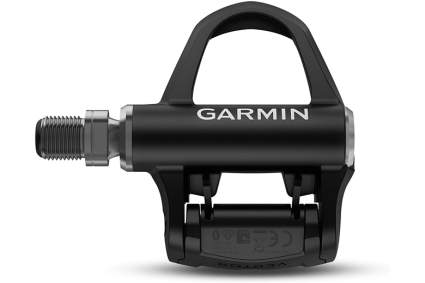
|
|
Price: $599.99 Shop now at Competitive Cyclist | Shop now Read our review |
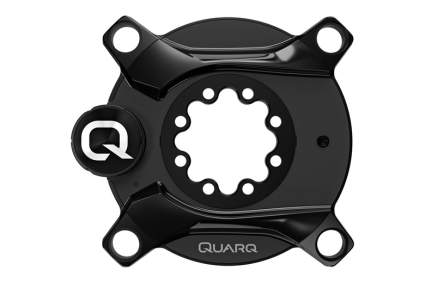
|
Amazon Customer Reviews
|
Price: $556.97 Shop at Amazon | Shop now Read our review |
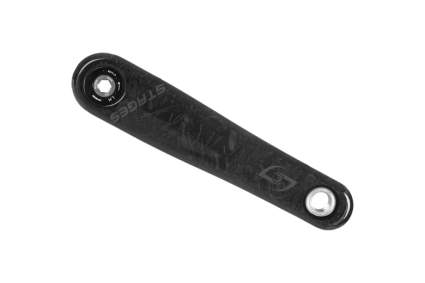
|
|
Price: $499.99 Shop now at Competitive Cyclist | Shop now Read our review |
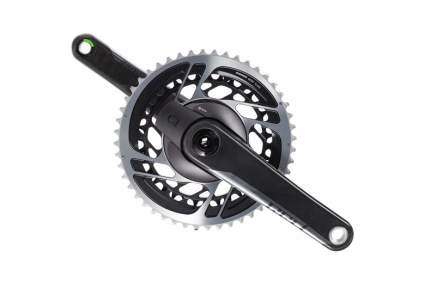
|
Amazon Customer Reviews
|
Price: $1,167.32 Shop at Amazon | Shop now Read our review |
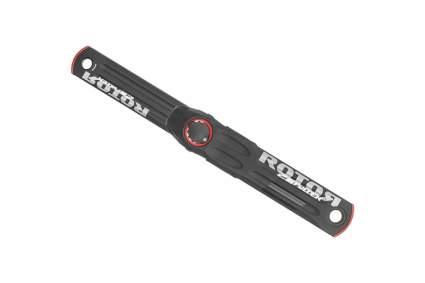
|
|
Price: $1,400.00 Shop now at Competitive Cyclist | Shop now Read our review |
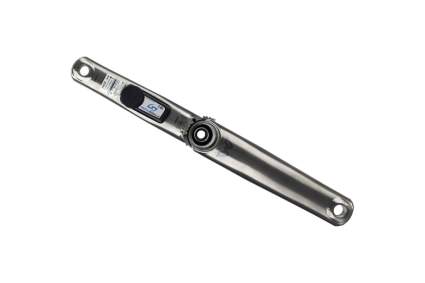
|
|
Price: $1,499.00 Shop now at Competitive Cyclist | Shop now Read our review |
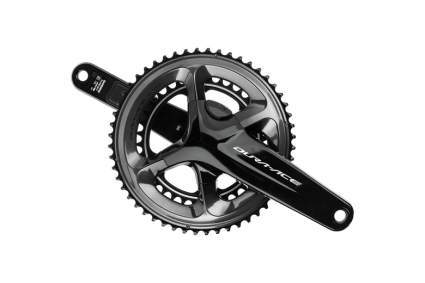
|
|
Price: $1,529.99 Shop now at Competitive Cyclist | Shop now Read our review |
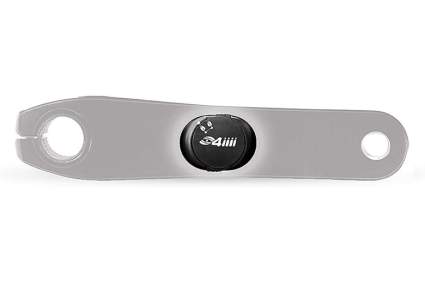
|
Amazon Customer Reviews
|
Price: $334.99 Shop at Amazon | Shop now Read our review |

|
|
Price: $349.99 Shop now at Competitive Cyclist | Shop now Read our review |
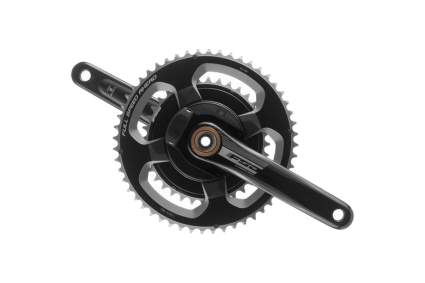
|
|
Price: $648.99 Shop now at Competitive Cyclist | Shop now Read our review |
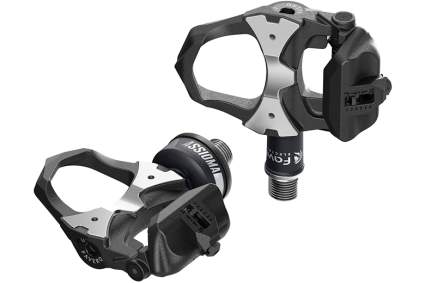
|
Amazon Customer Reviews
|
Price: $490.00 Shop at Amazon | Shop now Read our review |
-
1. Garmin Vector 3S Pedal-Based Power Meter
Price: $599.99Pros:- Elimination of pedal pods creates a more streamlined appearance
- Battery lasts up to 120 hours
- Accuracy measurements within +/- 1 percent
Cons:- Only measures output from the left leg
- Warranty is only for a year
- Not recommended for mountain biking
If you tend to use one bike for racing and another for training, you know how hard it can be to swap out power meters, which is where the easily interchangeable Garmin Vector 3S pedal really shines. The pedal is also easy to install, so you don’t have to waste precious minutes before the race begins.
If you’re familiar with previous Garmin Vector pedals, you may notice the slimmer profile of the 3S. That’s because the pedal pods found on prior models have been eliminated, creating a more streamlined power meter pedal. Accuracy isn’t an issue, as the Vector 3S delivers accuracy measurements within +/- 1 percent.
Your power and cadence is measured on the left pedal. This information is then wirelessly transferred via Bluetooth or ANT+ technology to your smartphone or cycling computer. You view your power during rides then easily download and analyze the data once you’re home.
Adjustable tension binding lets you decide how much tension you want when unclipping from the pedal. A pair of Garmin Vector and Look Keo compatible cleats with six degrees of float is included. The battery lasts up to 120 hours.
The Garmin Vector 3S is a single-sensing pedal. If you want to measure output from both legs, consider upgrading to the GARMIN Vector 3 Power Meter Pedals. These dual-sensing pedals are pricier than the 3S, but provide even greater accuracy.
-
2. Quarq Dzero DUB XX1 Power Meter Spider
Pros:- MagicZero auto-calibration technology that automatically calibrates as you ride
- Left and right power measurements within +/- 1.5 percent accuracy
- All power meter functions performed through the accompanying app
Cons:- Required crank arm assembly sold separately
- Necessary SRAM X-Sync 2 chainrings sold separately
- Requires a compatible DUB bottom bracket
If you’re primarily concerned about accuracy, the Quarq Dzero Dub XX1 power meter spider provides power measurements on both sides within +/- 1.5 percent accuracy. Another perk is MagicZero auto-calibration technology that automatically calibrates as you ride, which eliminates the need to manually calibrate your head unit.
In order to make the most of the setup, you’ll need to pair the spider with the Quarq DZero DUB XX1 crank arm assembly and SRAM X-Sync 2 chainrings. The DZero power meter spider also requires a DUB bottom bracket that will match the bottom bracket shell of your mountain bike frame. An IPX7 waterproof rating means you don’t have to worry about rides during inclement weather conditions.
-
3. Stages Cycling Carbon MTB GXP L Gen 3 Power Meter Crank Arm
Price: $499.99Pros:- Power meter only weighs 15 grams
- IPX7 water-resistant rating protects against the elements
- Power meter is safely tucked away for maximum protection
Cons:- Only comes with a one-year warranty
- Needs an app for zero resets
- Doesn't have dual-sided measurements
You don’t have to guess your power output just because you’re riding on trails, thanks to the Carbon MTB GXP L Gen 3 Power Meter Crank Arm designed specifically for mountain bikes. As an added bonus, you simply have to replace the non-drive crank arm for installation, leaving you with more time to explore your favorite trails.
Also, if you’re shopping on a tighter budget or you’re looking for an entry-level power meter for your mountain bike, this crank’s single-sided measurement keeps the cost down.
The power meter itself adds just 15 grams to the crank arm base and delivers a +/- 1.5 percent accuracy measurement. A low-profile pod sits inside the crank, away from potential damage caused by flying trail debris and other impacts.
Stages also outfitted the unit with an IPX7 water-resistant rating, so you don’t have to worry about the occasional splashes and run-ins with foul weather. Temperatures and weather conditions are bound to change as you’re out on the trails, which is why Stages also included its innovative Active Temperature Compensation to keep readings accurate despite the weather.
Bluetooth Smart and ANT+ technology ensure seamless transmission with your cycling head unit and smartphone. As an added bonus, you can pair the meter with the accompanying app for firmware updates and zero resets. A coin battery yields over 200 hours of ride time.
-
4. SRAM Red AXS DUB 12-Speed Power Meter Crankset
Pros:- Power readings within +/- 1.5 percent accuracy
- Aluminum DUB spindle enhances the durability of the bottom bracket bearings
- Innovative chainring shape makes it stiffer and more durable
Cons:- Not compatible with 11-speed cassettes
- Bottom bracket isn't included
- Some competitors have slightly better accuracy
The last thing you want during a race or a hard effort is to drop your chain or have trouble shifting, which is why the SRAM RED AXS power meter features a smaller front chainring size and a greater range in back to keep shifts uninterrupted. Along with providing dependable shifting when you need it, the power meter’s innovative chainring shape also makes it stiffer and more durable.
Any extra weight can be detrimental once the clock starts ticking and you speed off towards the finish line, but the Quarq DZero power meter is fully integrated to keep excess weight to a minimum. In total, the crankset weighs between 602 and 630 grams depending on size.
As you ride the power meter tracks right and left measurements for more accurate results, with power readings within +/- 1.5 percent accuracy.
An aluminum DUB spindle enhances the durability of the bottom bracket bearings and ensures compatibility with a wider selection of frames.
-
5. Rotor 2INPower Powermeter Direct Mount Crankset
Price: $1,400.00Pros:- USB-rechargeable power meter gets up to 250 hours of ride time per charge
- Stiff 30 milimeter alloy construction
- Upload and manage your riding data via TrainingPeaks
Cons:- Some competitors are lighter
- Can be tough to swap between bikes
- Rubber charging cover can fall off easily
Whether you know one side is weaker than the other or you simply prefer the accuracy of dual-sided measurements, the 2INpower crankset calculates your output on both sides for more realistic results. There are four gauges in the spindle and another four in the right arm for more accurate results, including your efficiency and pedal stroke balance. A built-in accelerometer keeps tabs on your cadence as you ride outdoors or inside on your smart trainer.
Despite its stiff 30 millimeter alloy construction, the crankset ranges from 586 to 618 grams, so you won’t feel bogged down whether you’re riding or racing. This USB-rechargeable power meter gets up to 250 hours of ride time per charge. You can also efficiently upload and manage your riding data via TrainingPeaks, while Bluetooth Smart and ANT+ technology make wireless connectivity and transmission a straightforward process.
-
6. Cane Creek EeWings Crank Arms + Stages Power
Price: $1,499.00Pros:- Stage's Active Temperature Compensation technology adjusts readings based on the external temperature
- Power meter has an IPX7 waterproof rating
- Strain gauges and updated accelerometer for measurements within +/- 1.5 percent accuracy
Cons:- Not designed for road riding
- Required chainrings sold separately
- Some competitors are more accurate
When you think of lightweight crank arms your mind might wander to fast-paced road races and training sessions, but this 400-gram crank is geared towards the off-road crowd. Don’t be fooled by its light construction, though, as this crank is made with sturdy titanium that’s up to 30 percent stiffer for its counterparts.
You’re bound to encounter more debris when you head off-road, including the occasional rock to crank impact, which is why Cane Creek made these cranks specifically to handle the debris and impacts that come with trail riding. The crank is backed by a 10-year warranty just in case.
The included power meter adds just 15 grams to the overall setup and features strain gauges along with an updated accelerometer for measurements within +/- 1.5 percent accuracy. Stage’s Active Temperature Compensation technology adjusts readings based on the external temperature.
Bluetooth LE and ANT+ connectivity ensure connectivity with your smartphone and head unit, while wireless firmware downloads keep the unit up to date. The power meter has an IPX7 waterproof rating, so you don’t have to worry about subjecting it to occasional rain showers or post-ride washes.
-
7. Shimano Dura-Ace FC-R9100-P Power Meter Crankset
Price: $1,529.99Pros:- Wireless firmware updates keep the power meter accurate
- Has a total weight range of just 712 to 788 grams
- Dual-sided set measures the right and left pedaling power balance
Cons:- Can be tough to move between bikes
- Sensors aren't fully integrated
- A few complaints of left and right measurement imbalances
The DURA-ACE R9100 power meter crankset is built for speed, with a total weight range of just 712 to 788 grams. However, its lightweight construction and overall durability also make this crankset an essential component for climbing, time trialists and sprinters. The crankset is specifically adapted for racing-specific braking systems without compromising the crank length or gearing options.
As you ride, the dual-sided set measures the right and left pedaling power balance and has an accuracy measurement within +/- two percent. In fact, Shimano has developed its own strain gauge for accurate readings in any riding conditions. Bluetooth LE and ANT+ technology allow for seamless connectivity between your smartphone and cycling computer. Wireless firmware updates ensure greater accuracy.
A rechargeable battery yields over 300 hours of ride time per charge, so you don’t have to worry about remembering to recharge the unit after every ride. You can easily swap out the chainrings without affecting the power. Compatibility with Hollowglide rings gives you full use of your Shimano drivetrain.
-
8. 4iiii Precision Power Meter Shimano Ultegra R8000
Pros:- Accurate power measurements within +/- 1.0 percent
- Weighs just 7.5 grams
- Gets over 100 hours on a coin cell battery
Cons:- Only measures the left leg
- Some competitors have a better battery life
- Doesn't give a low battery alert until 15 percent
The 4iiii PRECISION Shimano Ultegra R8000 Power Meter weighs in at just 7.5 grams, making it a lightweight addition to your ride. It’s also highly accurate, with measurements within +/- 1.0 percent.
Once you’ve installed the power meter, a process that should only take around 10 minutes, the PRECISION gets to work measuring power that’s generated by your left leg. To install, just swap out this power meter with an existing left-side crank arm and you’re ready to go.
In terms of battery life, the 4iiii power meter gets over 100 hours on a coin cell battery. You’ll get a low battery alert at 15 percent. Bluetooth Smart and ANT+ connectivity make the meter compatible with your watch, smartphone or cycling GPS. The power meter is compatible with all Shimano Hollowtech II road cranks.
-
9. Stages Cycling Gen 3 Shimano Ultegra R8000 Single Leg Power Meter Crank Arm
Price: $349.99Pros:- Individual meter calibration ensures accuracy ratings of +/- 1.5 percent in all conditions
- Active temperature compensation
- Cadence measured via accelerometer and gyroscope
Cons:- Only comes with a one-year warranty
- Some cyclists say it can miss revolutions on steeper climbs
- A few complaints of periodic dropouts
Individual meter calibration ensures accuracy ratings of +/- 1.5 percent in all conditions. Active temperature compensation also ensures accurate readings regardless of the environmental conditions. As an added bonus, the power meter is built on the non-drive-side Shimano Ultegra R8000 crank arm, which reduces the likelihood of accidental damage or disruption as you pedal.
Cadence is measured via an accelerometer along with a gyroscope for enhanced cadence resolution, so you can trust that your numbers are accurate. Bluetooth Low Energy and ANT+ connectivity provides dependable data transmission and allows you to connect the power meter to your devices. However, you don’t even need to open an app to check the battery level, as LED indicators display the battery level when the power meter starts up.
This Gen 3 Stages power meter will work with all Shimano Hollowtech II road drivetrains. Wireless firmware updates keep your power meter as accurate as possible.
-
10. FSA Alloy PowerBox Power Meter Crankset
Price: $648.99Pros:- Industry-standard accuracy of +/- 2 percent
- Compatible with Shimano/SRAM 10 and 11-speed components
- Crankset is made with 6061 T6 aluminum for added durability
Cons:- Some cyclists say the stock battery doesn't last long
- Requires an update for Bluetooth compatibility
- Cyclists need to stop pedaling for three seconds to reset
Power meters aren’t cheap, but this crankset is a more budget-friendly alternative. While its entry-level price tag makes this crankset a more affordable option for beginners and budget-conscious cyclists looking to get into the power game, it comes with an industry-standard accuracy of +/- 2 percent.
The crankset is made with 6061 T6 aluminum for added durability and is compatible with Shimano/SRAM 10 and 11-speed components. While it’s designed for single-leg measurements out of the box, an optional update lets you measure both legs for more accurate results.
As you ride the meter takes temperature variations into account to keep readings accurate despite the weather. A bottom bracket design allows for standard compatibility. While ANT+ is standard, a system update also gets you Bluetooth technology.
-
11. Favero Assioma Uno Side Pedal Based Power Meter
Pros:- Accuracy rating of +/- 1 percent with each pedal stroke
- Gets at least 50 hours of use per charge
- Bluetooth and ANT+ compatibility
Cons:- Not as accurate as dual-sided pedals
- Pedals may spin a bit when trying to clip in
- Tension adjustment screw seems flimsy
The Assioma Uno stands out for its innovative Instantaneous Angular Velocity-based power calculation system to deliver an accuracy rating of +/- 1 percent with each pedal stroke. Included Look Delta cleats are also compatible with select indoor spin shoes.
The Uno is designed for even the most challenging weather conditions and can be used in temperatures between 14 to 140 degrees Fahrenheit. Automatic Temperature Compensation technology means weather won’t influence the accuracy of your workouts.
Integrated rechargeable batteries make the pedal-based power meter easy to use. Even better, each charge delivers at least 50 hours of use. Bluetooth and ANT+ compatibility lets you quickly and easily pair the pedal with your iOS or Android GPS bike computer or smartphone.
Is a Bike Power Meter worth It?
If you've never used a power meter before, you're left guessing just how hard each effort really is, and how much room you have for improvement. A power meter is one of the pricier accessories in the world of cycling, but it holds valuable information about your performance.
The core component of a power meter is a strain gauge, which measures the amount of torque that's created when you pedal. This number is then multiplied by your cadence, resulting in your total power output in the form of watts. You can also get a clear idea of just how hard you worked throughout an entire training session based on the total kilojoules.
If you're gearing up for a race or you want to maximize your training, a power meter can help you determine your individual training zones based on your power output to get a better idea of your output and set clear power goals for your workouts.
Accessories such as heart rate monitors and GPS bike computers can further enhance your training, but won't give you actual power numbers. You can use your Bluetooth heart rate monitor strap to gauge the intensity of your workout, while your GPS bike computer can also show valuable data such as speed and cadence.
As Quarq product manager Nate Keck explains to The Pros Closet, your heart rate readings often lag, while power output is measured instantly. In some cases, it can take your heart rate 30 seconds or more to respond to a sprint. Most power numbers have innovative technology to keep your results consistent, regardless of the weather, temperature or other external factors.
How Do I Choose a Bike Power Meter?
A lot of factors come into play when you’re choosing a bike power meter. If you’re shopping on a tighter budget, you may start by limiting your options based on what you feel comfortable spending. However, if you’re looking to splurge a bit, you’ll have a wider range of power meters to consider.
Aside from price, one of the most important considerations when looking at power meters is placement. Rear hub meters are quite popular for their accuracy and reliability and are generally easy to install on the wheel. However, rear hub meters don’t distinguish between your right and left leg, which can lead to slightly less accurate results if you have a significant imbalance.
Pedal power meters are easy to swap between bikes and can often be changed in a matter of minutes, or however long it normally takes you to swap out your pedals. However, pedal meters can be a bit less accurate due to complex measurements. While most power meter pedals are protected against potential impacts and foul weather, there’s still an increased risk because they’re exposed on the side of the bike.
Chainring and bottom bracket power meters tend to be quite reliable, although they can be harder to fit. If you plan on training and racing with this type of power meter, be prepared to spend enough time to properly fit it onto the bike. You may also need to use a different brand chainset.
What Is the Best Cycling Power Meter?
The best cycling power meter looks a little bit different for every cyclist. If you’re just starting out and want a good entry-level cycling power meter, or you’re shopping on a tight budget, you’re likely going to end up with a single-sided power meter. This type of power meter tends to be more affordable than dual-sided systems, as it often measures output in one leg (normally the left) then doubles it to come up with a total output number. This is a good starting point if you’re new to the world of power meters, but it can lead to less accurate results, especially with more significant imbalances between the left and right legs.
Dual-sided systems are often found on pricier systems, although they tend to be more accurate as they measure your combined power output from both legs. While the results can be more accurate than single-sided systems, a double-sided measurement usually can’t distinguish between the power output of each leg. Aside from providing more accurate measurements and assisting in imbalances, dual-sided systems can also be used to improve your pedaling technique.
Connectivity is another factor, although most modern power meters have Bluetooth LE or Bluetooth Smart and ANT+ connectivity so that you can easily connect with your smartphone, cycling computer and even a tablet to track your performance as you ride or revisit your stats when you’re done with a workout. Connectivity also makes it easier to use your favorite cycling apps such as Zwift or TrainingPeaks and to update the unit in a timely fashion with the latest firmware updates for improved performance and accuracy.